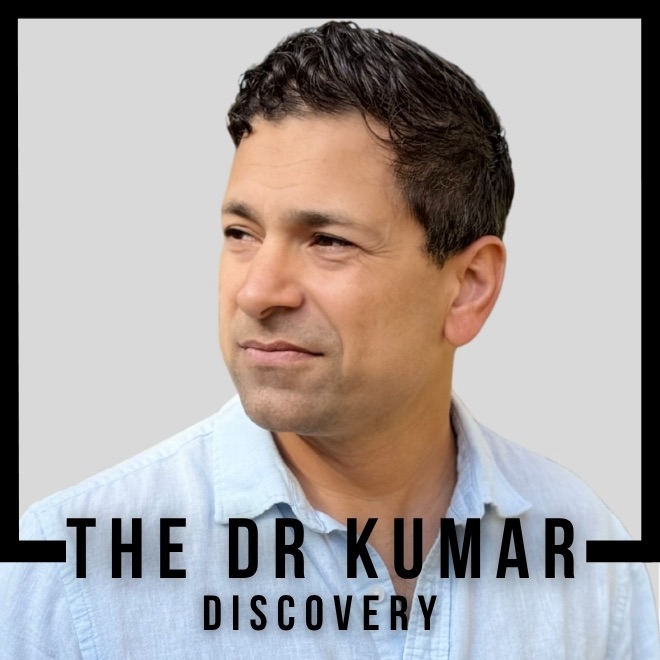How Did 1.8 Million Children Test the Salk Polio Vaccine in 1954?
The 1954 Salk polio vaccine field trial involved 1.8 million children across the United States and Canada, making it the largest medical trial in history. Led by epidemiologist Thomas Francis, the study tested Jonas Salk’s killed-virus vaccine against placebo, ultimately proving 80-90% effectiveness against paralytic polio and leading to the April 12, 1955 “V-Day” announcement that changed medical history.
Dr. Kumar’s Take
This trial represents both scientific rigor and desperate hope converging at a critical moment. With over 21,000 Americans paralyzed by polio in 1952 alone, families were willing to enroll their children as “Polio Pioneers” in an unproven vaccine trial. The 80-90% efficacy result wasn’t just a statistical success - it meant thousands of children would walk instead of spending their lives in wheelchairs or iron lungs.
Study Snapshot
The 1954 field trial was designed and led by Dr. Thomas Francis, Salk’s former mentor and a respected epidemiologist at the University of Michigan. The study design was rigorous:
- Participants: 1.8 million children aged 6-9 years
- Design: Randomized, double-blind, placebo-controlled trial
- Geographic scope: United States and Canada
- Duration: One year of follow-up after vaccination
- Primary endpoint: Prevention of paralytic poliomyelitis
- Control group: Over 1 million children received placebo injections
The children who participated were called “Polio Pioneers” and received special pins and certificates recognizing their contribution to medical history.
Results in Real Numbers
On April 12, 1955, Thomas Francis announced the trial results at the University of Michigan in Ann Arbor. The findings were dramatic:
- Overall efficacy: 80-90% effective against paralytic polio
- Type 1 poliovirus: 60-70% protection
- Type 2 and 3 poliovirus: 90%+ protection
- Safety profile: No serious adverse events attributed to the vaccine
- Bulbar polio prevention: Significant protection against the most deadly form
The announcement triggered nationwide celebration. Church bells rang, factory whistles blew, and people cried in the streets. Storefronts were painted with “Thank you, Dr. Salk.”
Historical Context
The trial occurred at polio’s peak terror in America. Every summer brought new outbreaks that emptied swimming pools, closed movie theaters, and kept children indoors during the most beautiful days of the year. Parents watched the calendar slide toward summer with dread, knowing it could be the season polio touched their family.
The pressure for a solution was enormous. Jonas Salk’s approach - using a killed virus vaccine - challenged the scientific orthodoxy that vaccines required live, weakened viruses to be effective. Most experts believed Salk’s “too simple, too safe” approach wouldn’t work.
Safety, Limits, and Caveats
The trial’s success came with important caveats that shaped future vaccine development:
- Manufacturing challenges: The Cutter incident shortly after approval showed that killed-virus vaccines required precise inactivation procedures
- Serotype coverage: The vaccine needed to protect against all three poliovirus types
- Duration of immunity: Long-term protection required booster doses
- Population coverage: High vaccination rates were needed to achieve community protection
The trial also established new standards for vaccine testing, including the importance of large sample sizes, proper controls, and independent statistical analysis.
Why This Matters for Modern Medicine
The 1954 trial established the gold standard for vaccine evaluation that continues today. Key principles included:
- Independent oversight: Thomas Francis, not Salk, led the analysis to avoid bias
- Rigorous statistics: Proper sample size calculations and statistical methods
- Public transparency: Results were announced publicly and published in peer-reviewed journals
- Safety monitoring: Careful tracking of adverse events in all participants
The trial also demonstrated how public-private partnerships could accelerate medical breakthroughs. March of Dimes funding, government coordination, and pharmaceutical company production capabilities all contributed to success.
Practical Takeaways
- Understand scale requirements: Major vaccine trials need massive sample sizes to detect efficacy
- Appreciate volunteer contribution: 1.8 million families trusted science with their children’s health
- Recognize rigorous design: Double-blind, placebo-controlled trials remain the gold standard
- Value independent analysis: Having Salk’s mentor, not Salk himself, analyze results prevented bias
- Learn from success: The trial model influenced all subsequent vaccine development
- Remember the stakes: Families enrolled children because polio’s known risks outweighed vaccine uncertainty
Related Studies and Research
- What Is Poliomyelitis? The Virus That Once Terrorized America
- The March of Dimes: How FDR’s Campaign Funded the Polio Vaccine
- Paul Alexander: The Man Who Lived 72 Years in an Iron Lung
- History of polio vaccination
- Episode 28: Iron Lungs, Fear, and a Miracle: How We Stopped Polio
FAQs
Why did parents allow their children to participate in an unproven vaccine trial?
Parents had lived through years of polio terror, watching children become paralyzed or die each summer. The known risks of polio outweighed the unknown risks of an experimental vaccine.
How did researchers ensure the trial was fair and unbiased?
The study was double-blind (neither families nor doctors knew who got vaccine vs. placebo) and analyzed by Thomas Francis, an independent researcher, not by Salk himself.
What made this trial different from previous vaccine studies?
The scale was unprecedented - 1.8 million participants made it the largest medical trial in history. The rigorous design and independent analysis set new standards for vaccine evaluation.
How quickly did vaccination begin after the successful results?
Within weeks of the April 12, 1955 announcement, pharmaceutical companies began mass production and distribution, showing how prepared the system was for success.
What happened to the Polio Pioneers after the trial?
These children became part of medical history, and many remained proud of their contribution throughout their lives. They helped eliminate a disease that had terrorized their generation.
Bottom Line
The 1954 Salk vaccine trial transformed 1.8 million children into “Polio Pioneers” who helped prove that a killed-virus vaccine could prevent paralytic polio with 80-90% efficacy. This largest medical trial in history not only ended America’s polio epidemic but established the rigorous standards for vaccine evaluation that protect public health today.


